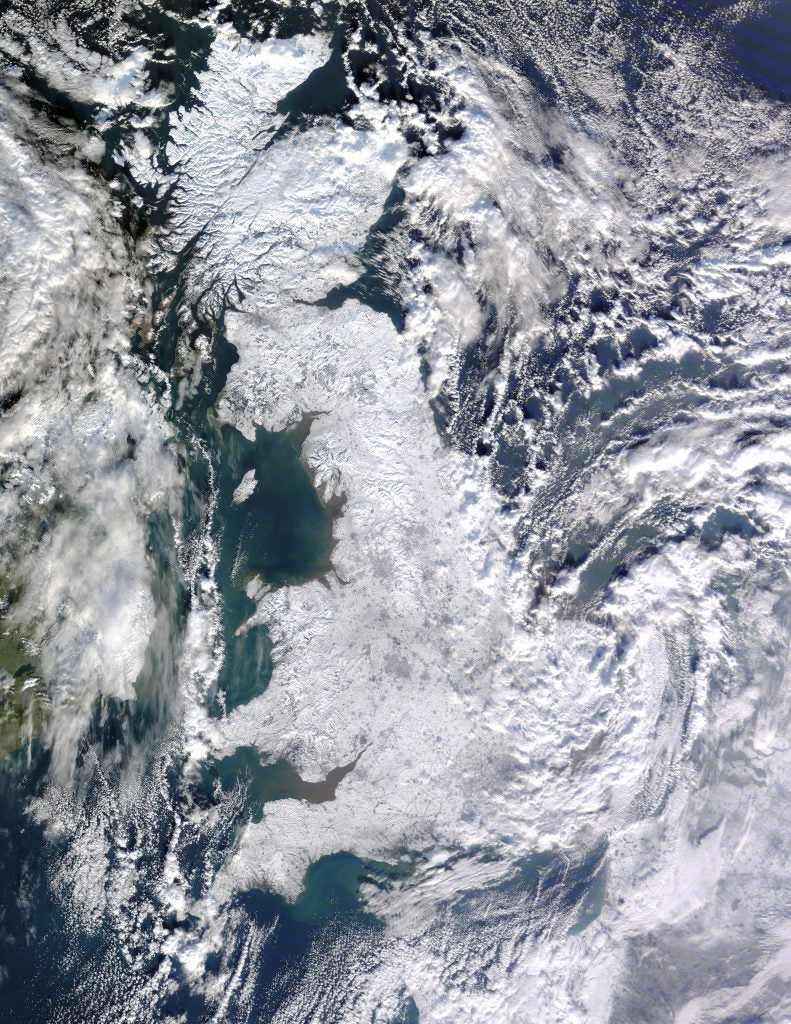As experts around the world consider ways to stabilize global temperatures at either 1.5 or 2 degrees Celsius above preindustrial levels, scientists are meticulously analyzing the risks of a world that warms by that additional half a degree.
A growing number of studies have found that a 2 degree Celsius world is far worse than a 1.5 degree Celsius world.
One of those new studies, published in Earth System Dynamics, shows how severe winter storms in Europe will become even more severe.
Analyzing risks of warming from 1.5 degrees to 2 degrees Celsius
Scientists recently launched a cutting-edge research initiative designed to quantify risks at the levels of warming specified by the Paris Agreement (1.5 degrees and 2 degrees Celsius).
The effort runs numerous model simulations with conditions at both of these global average temperatures, and provides high resolution data in space and time. This is crucial for understanding changes in extreme events such as storms.
Why we care about severe European winter storms
Severe storms over the northwestern parts of Europe are currently a major winter hazard.
The storms are often accompanied by high wind speeds and intense precipitation. They may lead to flooding and coastal erosion. They cause serious risks to health, transportation and infrastructure, along with costly damages.
Severe European winter storms will get worse
Investigating the changes in winter weather extremes over the Euro-Atlantic region (such as British Isles and Scandinavia) associated with the two temperature levels revealed that an additional half a degree of warming makes a significant difference for the region’s weather.
Severe European winter storms may include even more precipitation (rain, freezing rain, and snow) and higher wind speeds as the world warms from 1.5 to 2 degrees Celsius – making the already severe storms even more severe.
The severity of stormy weather is expected to intensify, largely because of the intensification and northeastward shift of large-scale atmospheric circulation and the associated mid-latitude westerly winds over the North Atlantic.
These mid-latitude westerly winds are responsible for transporting storms towards Europe. As they shift to the northeast, they transport storms further towards the northeastern parts of Europe. This manifests in the increase of stormy weather and extreme wind and precipitation, concentrated between the British Isles and Iceland, over the Norwegian Sea, and in Scandinavia.
Increases in the intensity of extremes will impact the northwestern coasts of northern Europe most severely, as they are mostly exposed to the North Atlantic storms. The severity of extreme precipitation events may increase up to 25 percent over the coasts of the British Isles and Scandinavia.
The intensity of wind extremes will also increase over the northeast Atlantic and northern Europe, which may impact inland and coastal infrastructures as well as offshore wind farms.
Increasing ambition for temperature targets
This study is part of a growing body of literature in support of efforts to increase the ambition of climate change mitigation efforts, with the goal of stabilizing temperatures at 1.5 degrees rather than 2 degrees Celsius above preindustrial levels. A 1.5 degree increase appears much safer for humanity.
We must act on climate change, and act quickly, to prevent catastrophic damages such as the ones outlined in this study.











One Comment
Another recent study tells us that CO2 has nothing to do with changes in weather and storm activity in the Atlantic:
http://kaltesonne.de/hurrikane-kommen-heute-wegen-atlantischem-ozeanzyklus-schneller-auf-touren-als-noch-vor-30-jahren/
Those mid-latitude winds that you claim are bringing increased storm activity have been found to be caused by a change in the AMO:
“Rather, the phenomenon is strengthening more in the central and eastern Atlantic, especially to the east of the islands of the Lesser Antilles, which includes the Virgin Islands and Saint Kitts. That’s the same area where the AMO creates warmer waters and boosts ocean heat content, in the central and eastern Atlantic. ”
The AMO is cyclical and not dependent on CO2 as a driver. The study in your article assumes that CO2 is behind what has been observed of the weather, You did not consider cyclical factors at all and have jumped to an erroneous and ill-advised conclusion.